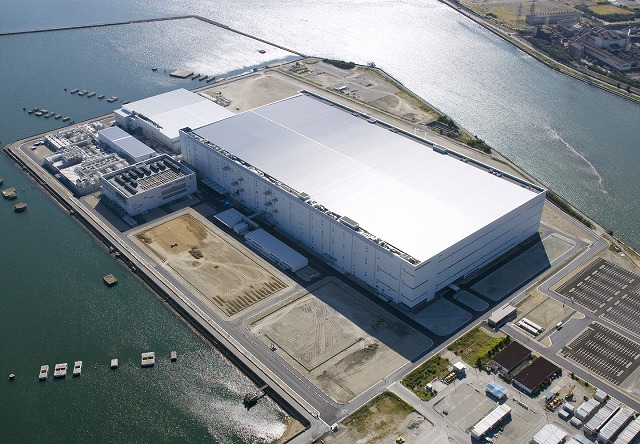Panasonic Corporation held an opening ceremony on November 10th for its Himeji Plant of the Panasonic Liquid Crystal Display Co., Ltd. The plant currently manufactures 32 and 42 inch IPS α liquid crystal display (LCD) panels, producing 405,000 panels (in 32 inch equivalency) per month and shipping them to Panasonic's flat panel television assembly sites around the world.
World Class LCD Panels
The IPS α LCD panels manufactured by Panasonic Liquid Crystal Display have the world's highest light transmission rate(1) among all LCD panels. They are highly regarded in the global market for their high picture quality with motion picture resolution(2) comparable to direct-view type PDP, wide viewing angles, cost competitiveness and energy-saving benefits.
For a full explanation, visit the IPS α technology page.
Sustainability Efforts at the Himeji Plant:
- Reduce Energy Used in Production
Dramatically increase production efficiency by streamlining the core processes through reduced processing frequency in the exposure process and installation of the latest manufacturing facilities to yield eighteen 32 inch panels from a single sheet of motherglass. This enables a 20% reduction in processing time as well as reducing production energy cost(3) per 32 inch panel by about 20% (both benchmarked against existing 6th generation Mobara Plant(4)).
- Introduce System for Recycling 100% of Water Used
Reduce water consumption in the production process by 35% (vs. Mobara plant) by streamlining the manufacturing process (see above) to reduce the water processing time, and by implementing simultaneous processing of multi-panel sectioning. Adoption of discharge-water retrieval and recycling system which can allow 100% of the water used by manufacturing equipment and air conditioner to be recycled at the manufacturing site.
- Reduce CO2 emissions by 33%
Reduce CO2 emissions by 33% (compared with Mobara Plant) by streamlining the production process (see above) to reduce the manufacturing lead-time, adopting highly efficient engine system and using the heat released from manufacturing equipment to power the air conditioners.
- Improve environmental consciousness through other activities.
- Reduce CO2 emissions to zero through activities such as the recycling of thin-film wiring materials.
- Create a green facility by adopting photo-catalyst coated exterior walls, water-permeable asphalt paving, etc.
- Reduce CO2 emissions in the material/component transportation process by directly connecting the lines with the adjacent material/component plant.
- Supplement the electricity required for waste water processing with electricity from a solar power generation system installed on the wall of the tank for the discharge-water retrieval and recycling system (see above). The system is scheduled to be introduced in February 2011.
Unite All Efforts for a Green Society
To achieve the Panasonic Group's goal of becoming the No. 1 Green Innovation Company in the Electronics Industry, as well as to meet robust global demand for flat-panel televisions, we will vigorously work to reduce CO2 emissions and recycle resources in order to balance productivity improvements with reductions in the environmental burden.
Notes:
- The transmission ratio for liquid crystal panels used for commercial models of LCD TVs (as of November 10, 2010, according to an internal study)
- Motion picture resolution indicates the motion display performance by number of line which human eyes can recognize. (Measured by Advanced PDP Development Center Corporation Method)
- Total cost of energy (water, electricity, gas) per 32 inch panel.
- Mobara Plant (Mobara City, Chiba Prefecture). Manufacturing started May 11, 2006; Manufacturing capacity: 7.2 million units/year (32 inch equivalent)
Related Links

